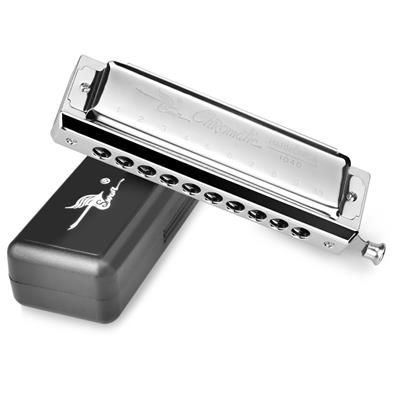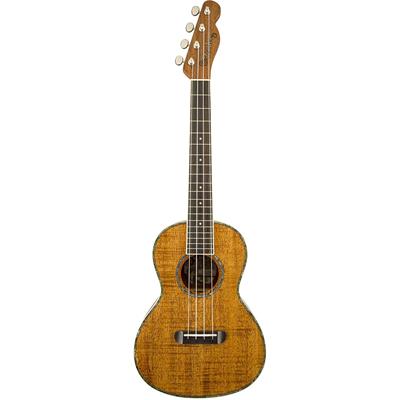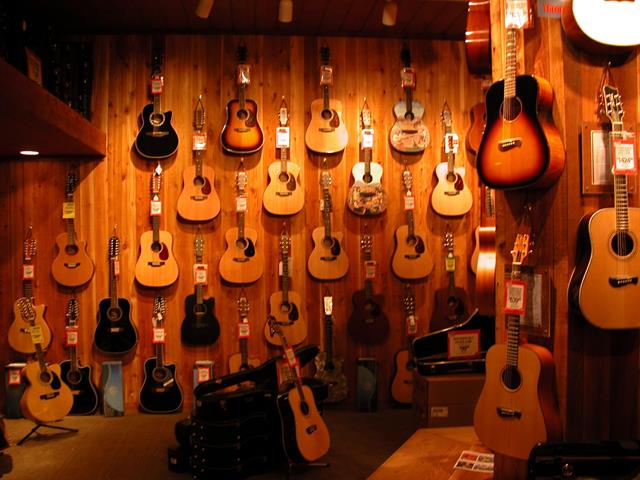Transitioning from playing a few chords to crafting complete songs requires dedicated effort and practice. Simply memorizing and replaying songs may not be enough if you aspire to hone your musical abilities and become a true musician. The key lies in discovering your unique sound, a task that demands more than just technical proficiency. Playing with genuine passion and pouring your heart and soul into your music is a lesson that cannot be taught by anyone but yourself.
So how do you infuse your music with every bit of emotion you have and make it sound like heaven has descended on the Earth and the first place it visited was your gig? Pure genius is a lazy answer, or at least it is in my opinion. What really matters is dedication and quality equipment. Putting in every bit of emotion into your music is especially vital with jazz music. That is why when you are looking for an amplifier that will fit with jazz can make or break your performance. In this article, I will talk about just a few of the best amplifiers for jazz guitar and give you quick tips on what you need to look for.
What’s The Best Jazz Guitar Amp
| Image | Amplifier Model | ||
|---|---|---|---|
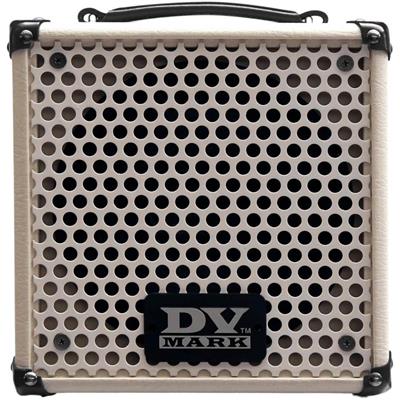 | DV Mark Little Jazz |  (4.8 / 5) (4.8 / 5) | Check on Amazon |
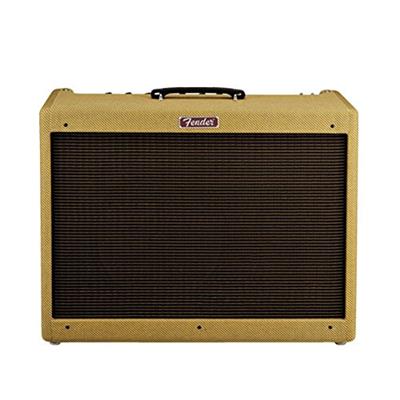 | Fender Blues Deluxe Reissue |  (4.8 / 5) (4.8 / 5) | Check on Amazon |
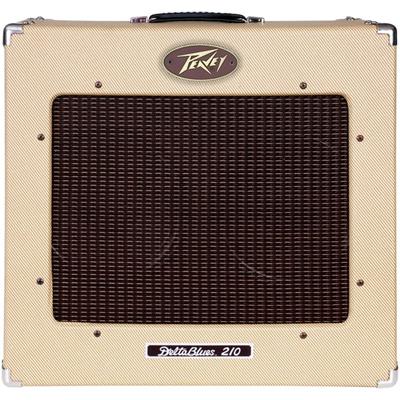 | Peavey Delta Blues 210 |  (4.8 / 5) (4.8 / 5) | Check on Amazon |
 | Fender Hot Rod Blues Junior III |  (4.7 / 5) (4.7 / 5) | Check on Amazon |
 | Roland JC-40 |  (4.7 / 5) (4.7 / 5) | Check on Amazon |
DV Mark Little Jazz Guitar Combo Amp

Let’s start this list with a solid combo amplifier from DV. The DV Mark Little Jazz Guitar Combo Amp is the epitome of bang for the buck. This 45-watt amp features a single channel, one 8″ DV Mark Custom, Aux. input along with headphone output for you to practice in silence. While a lot of amps on this list are jazz-friendly, this model was created specifically for jazz guitars. It was also made for people who do not have that much space or budget. The DV Mark is the most affordable model on this list but that does not mean it lacks the tone and volume. I would not go as far as saying that this would be my number one choice for gigs, but as a beginner, I would relish in the versatility and ease of use of this model. With quite a clean and warm sound this model will be an amazing beginning to your journey into the world of jazz music.
Pros:
- Quite affordable compared to other available options
- Spectacular sound quality
- Built to last
- Made specifically for jazz guitars
Cons:
- Not the most versatile amplifier out there
Fender Blues Deluxe Reissue 40-Watt 1×12-Inch Guitar Combo Amp

Did you think I would not include at least one (there are actually two) Fender amps on this list? Whether it’s metal, jazz, or bass amps Fender has got an option for each and every genre, style of music, and type of guitar. This Blues Deluxe Reissue is a 40-watt combo amp and is one of the best jazz guitar amps. This model features a 12-inch speaker, three 12AX7 tubes, and two 6L6 tubes for bombastic sound and the best jazz tonality. This model is vintage in looks and tone. With two channels (vintage and drive) and a 2-button footswitch, you will get pretty versatile equipment that is packaged in a beautiful, old-school design with a tweed cover and chrome control panel. Granted, tone and power are what should make you want to buy an amplifier but looks never hurt. And in this case, looks definitely do justice to this vintage-sounding amp that can produce the sound that will blow you away.
Pros:
- On-board reverb
- Great-sounding drive channel
- Usable effects loop
- Produces bright highs and authentic lows
Cons:
- Not very portable
- Not the most versatile amp
Peavey Delta Blues 210 Guitar Amplifier with Tremolo

Jazz is about emotion, nostalgia, tradition, and innovation all in one. It is about music that moves you to the core. In my mind, it is about musicians that chain-smoke, wear classy 50s clothes, and make music that tells you more in two notes than an entire book. Peavey Delta Blues is what will help you tell your story. This all-tube amp with two 10″ speakers, three 12AX7 preamps, and four EL84 power amps will soothe your soul in time of need and blow your mind at the same time. 30-watt power might not seem that much and while it might not be the same as a 100-watt tube, it still delivers on the volume. In addition to its other impressive features, this amp is equipped with a versatile 3-band EQ, allowing you to exert complete control over your tone and achieve a rich, jazzy sound. Of course, this amp is not limited to jazz alone, as it can also be effectively employed for rock and country genres. Adding to its allure, this amp boasts a stunning vintage design, complete with a tweed cover and rustic aesthetic, enhancing its overall appeal.
Pros:
- Can last you through a lifetime
- Amazing clean tones that are somewhere between Fender and Vox
- Unique sonic characteristics
- Versatile features and options
Cons:
- Shared EQ for both channels
- On-board tremolo might not be everybody’s cup of tea
Fender Hot Rod Blues Junior III 15-W Tube Guitar Combo Amp

“15 watts is not a lot”, said a person who has never used a tube amplifier. It will amaze you how much a 15-watt all-tube amplifier can do, especially one made by Fender. This Hot Rod Blues Junior III is a tube combo amplifier that does not take up a lot of space. It is pretty lightweight and easy to transport. With 3-band EQ, FAT boost switch, and 12″ Fender “Lightning Bolt” speaker you will be getting a full package that will deliver on jazz tone, good volume, and versatility. This model is made specifically for jazz, it is great for a lot of genres so if you are iffy about getting an amp just for jazz guitar you should get this one and use it for other guitars as well. While I hesitate to employ the cliché “grab-and-go” term for amplifiers, this particular model lives up to its reputation. It offers exceptional portability, requiring minimal storage space. Moreover, it ensures countless hours of uninterrupted play to help you achieve that elusive, flawless tone.
Pros:
- You can create overdriven sounds even at lower volume
- An affordable tube amplifier
- Great sound quality
- The features are right on-point
Cons:
- Does not have a standby switch
- Not the best build quality
Roland JC-40 40W 2×10 Jazz Chorus Guitar Combo Amp

With over 40 years behind them, people at Roland know what the essence of quality equipment is. Their amps always deliver on the tone and functionality no matter the price. In this case, the JC-40, quite an inexpensive amplifier, offers a clean tone and sizzling volume. This is a combo model, so maintenance will not be a big problem. What you will be getting is a 40-watt amp, with two 10″ speakers, along with effects like chorus, vibrato, reverb, and distortion. Moreover, this amp packs a lot in quite a compact size. If you are a new musician, trying to scramble money for your next gig and pack in a small van with 5 other band members, this baby will not take up a lot of space. It won’t get ruined easily either, unlike a lot of tube models. In summary, among the myriad of Roland amps, I adore, this particular one stands out for its exceptional jazz-oriented effects and settings.
Pros:
- Offers the legendary multi-dimensional chorus
- Well-built and extremely durable
- Versatile features and sounds
- Stereo functionality
Cons:
- Footswitch is not included in the package
If you are looking into an amplifier for jazz guitars you are halfway to getting that jazz tone that everyone swoons over. Here I will talk a bit about how to choose the best amplifier for your jazz guitar and then a bit more about how to actually achieve the tone. Of course, just a guitar and an amplifier are not enough for the sound, there are a lot of other accessories, equipment, and techniques you need to keep in mind. Let’s start with the basics:
Jazz Guitar Amps Tips
Controls, controls, and even more controls. You have to be the master of your tone but you will not be able to do it without having EQs and knowledge of how to tweak them to achieve the best (or your favorite) tonality. You have to know when to use pickups, spiking middles and playing without having to blow away the wig off of the person standing in front of you. If you are coming to jazz guitars and amps from an experience perspective if you were playing bass or just electric guitar and think that those skills and techniques will be useful, forget about it. Well… not completely, but jazz requires an approach that is a bit different than any other style. You need clean sound. You do not need high volume to impress the audience and get the best tone. Knowing your tone is important but hard to reach. When you are just starting off do not overwhelm yourself with different settings. Try out a few but give them some time to grow on you and most importantly for your skills to grow with the tone. I would even recommend going flat and then working up and maybe adding effects if you find it necessary. You will not achieve perfection after one playing but that does not mean you have to switch up every five minutes.
Tube vs Solid-State for Jazz
The question of which one is better, a solid-state or tube amplifier, is not specific to amplifiers for jazz guitars. This issue is probably one of the most debated and hit things apart from the actual jazz sound. Which type of an amplifier you will be getting is up to you but keep in mind these factors:
Tube – Usually has better tone and more natural distortion than solid-states but it is also a lot more expensive. They are also harder to maintain because valves do not last forever. They are more sonically nuances and interesting but then again, a bit harder to control and not easy to transport. While some amps are great for certain styles I would say that tube amps are especially great for jazz. They provide all the necessary natural, authentic, and simple sounds that are so appreciated in jazz.
Solid-States – Great price, easy to transport, durable, and easier to control the sound. But, as already mentioned, nothing really compared with tube amplifier capabilities, tone-wise. With innovations, manufacturers have come up with some amazing solid-states and combos that sound very similar to tube amps but for a trained ear there is no mistaking. And if you want to learn more about the differences between the two check out our article ”Solid-State Vs. Tube Amplifiers”.
Conclusion
Jazz guitar and an amplifier for jazz guitar are paramount to your performance. That is why we have articles about the best jazz guitars and this best amp for jazz guitar list. While we tried to come up with some options for beginners, intermediate players, and even pros, you do not have to limit yourself to this list. Remember, if you already have some experience with guitars and amps but it’s not in jazz, chances are you will have to re-learn a lot of skills and techniques. But coming up with a tone that is unique to jazz and unique to your performance is not an easy task. For some people, it is even impossible. It’s probably one of the few styles that make me think that if you do not have a certain oomph, a certain innate talent for it, achieving the jazz tone might be a bit hard if not impossible.

